Amazon SageMaker Integration
V7 Integration with Amazon SageMaker and MONAI Core allows building healthcare AI with V7 Darwin.
Amazon SageMaker is a family of integrated and fully managed services to label, build, train, and deploy machine learning models for any use case. However, some specialized use cases, particularly those involving medical imaging files, require dedicated annotation tools.
V7 addresses this need with specialized DICOM labeling tools and auto-annotation capabilities fine-tuned for medical imaging.
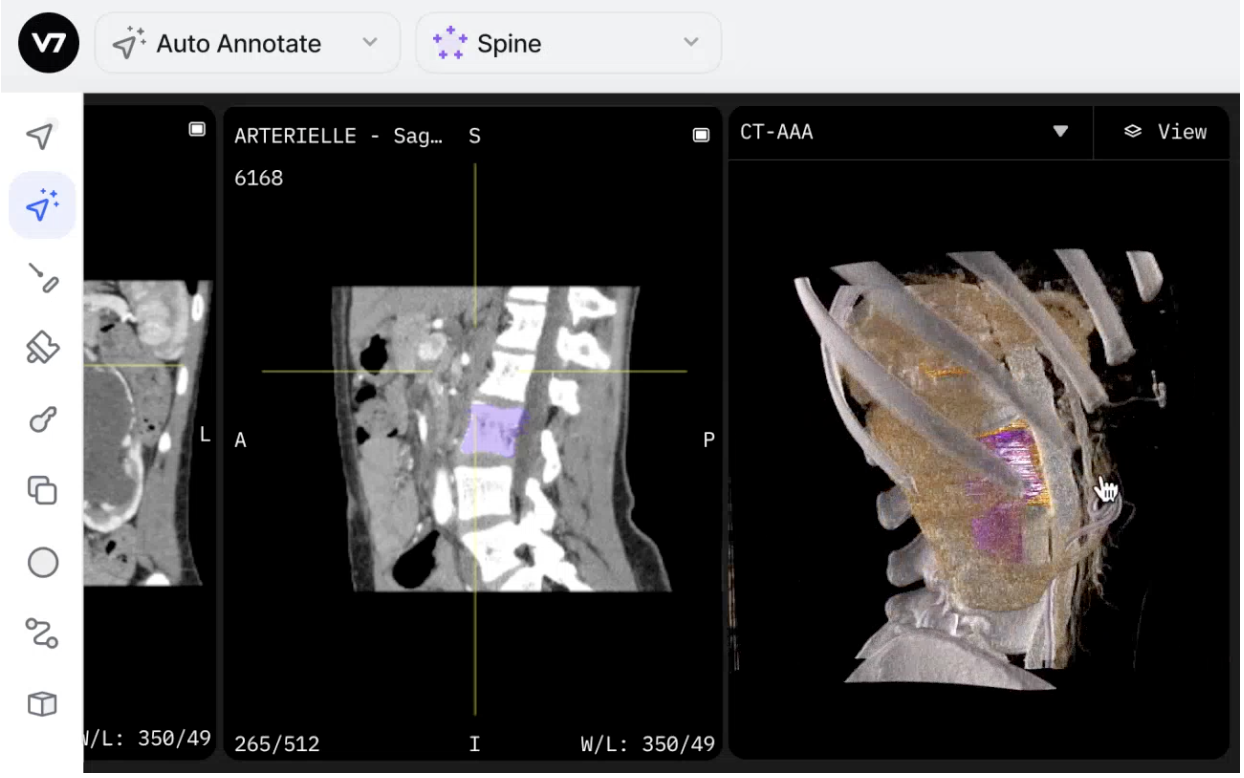
V7 offers a comprehensive suite of advanced features tailored for healthcare AI:
- Enhanced Medical Imaging Tools: Includes state-of-the-art tools for instance segmentation and medical labeling, supported by a multislot feature for creating custom layouts, MPR views, and 3D visualizations.
- AI-Assisted Annotation: Publicly available models such as TotalSegmentator are complemented with real-time auto-annotate models such as SAM (from Meta) and models specifically fine-tuned for radiological use cases such as tissue or lesion segmentation.
- Workflow and Data Management: Features workforce orchestration and expert labeling services, alongside advanced, UI-configurable workflows for efficient project management.
- Comprehensive Support for Healthcare Data: V7 natively handles DICOM/NIfTI formats, WSI samples, and other healthcare modalities, using a single repository for scalable training data management.
- Productivity and Accuracy Tools: Offers a purpose-built annotation tool and integrated AI-assisted tools and models for up to 10X faster annotation.
- Customizable and Integrated Solutions: Provides flexible, fully customizable workflows for precise control, complete with a comprehensive Python SDK and REST API toolkit for seamless integration into the MLOps stack.
These features are essential for accurate training data preparation. Amazon SageMaker supports various deep learning frameworks including MONAI Core, which provides healthcare-specific data structures, transforms, and architectures. Like this, SageMaker can easily connect V7 with MONAI Core.
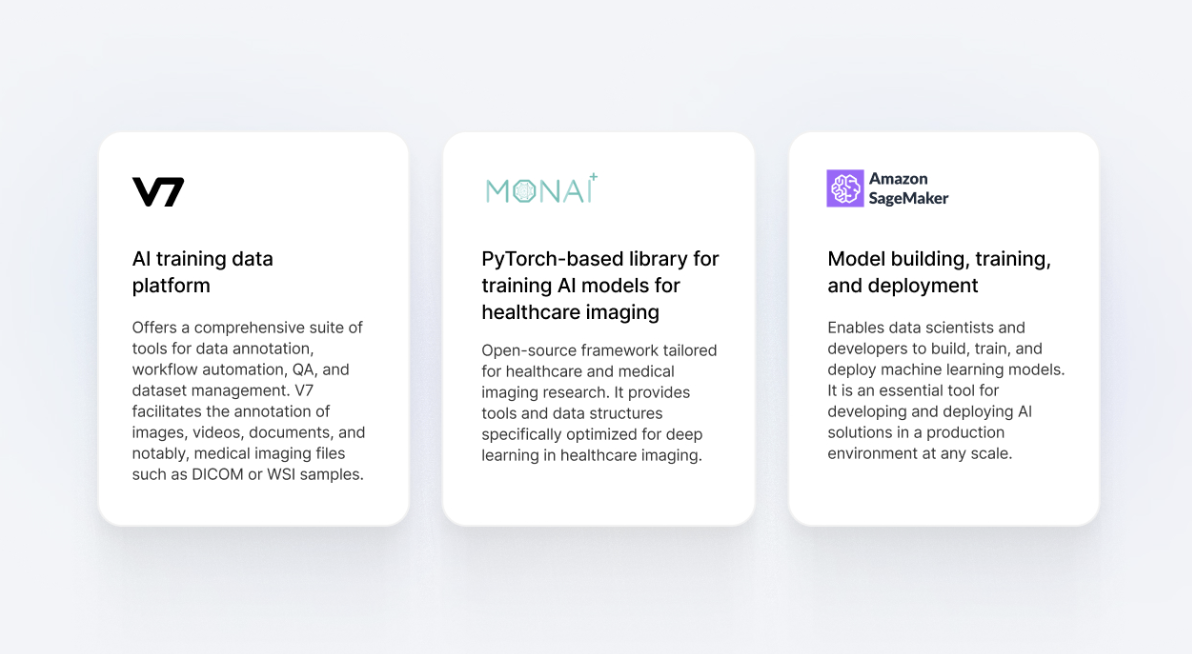
Now, what does this all mean in practical terms?
Essentially, you can store your medical images on AWS, label them using V7 tools, export the training data, and - with a simple code snippet - initiate a SageMaker training session, which also includes preprocessing the Darwin export with MONAI Core.
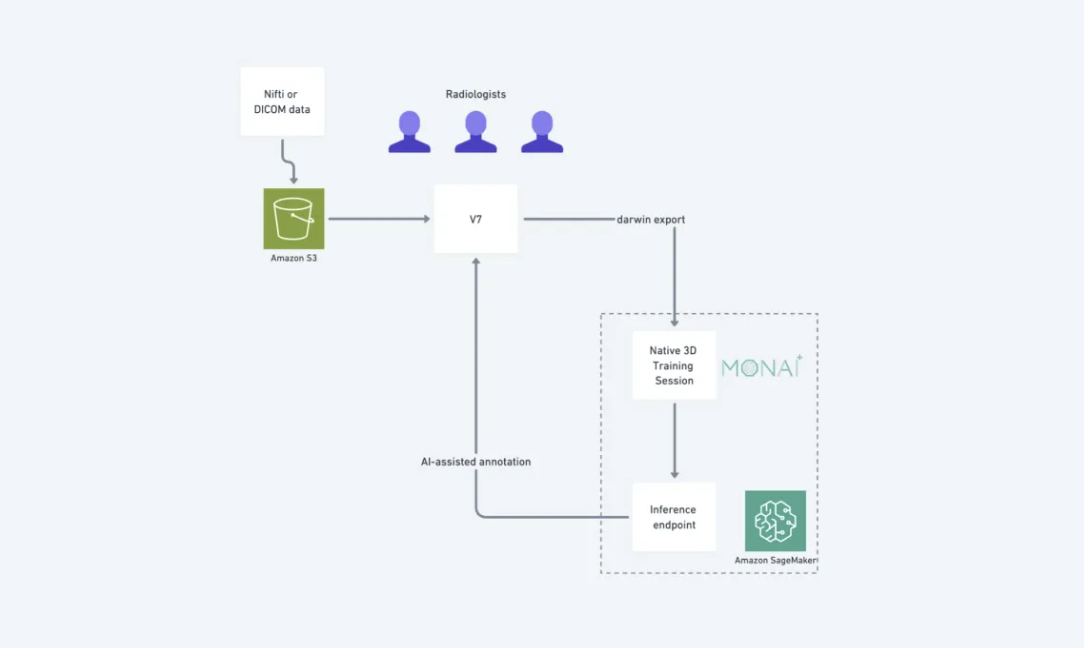
Here is an example of how to set up the workflow presented above:
Step 1: Upload your DICOM files
Start by creating a new dataset in the V7 platform. You can use an Amazon S3 bucket as your data container and V7 will act as the frontend tool for dataset management and annotation. Upload your DICOM files using the drag-and-drop UI or the CLI command. During this step, you can also decide if you want to generate multi-planar reconstruction views.
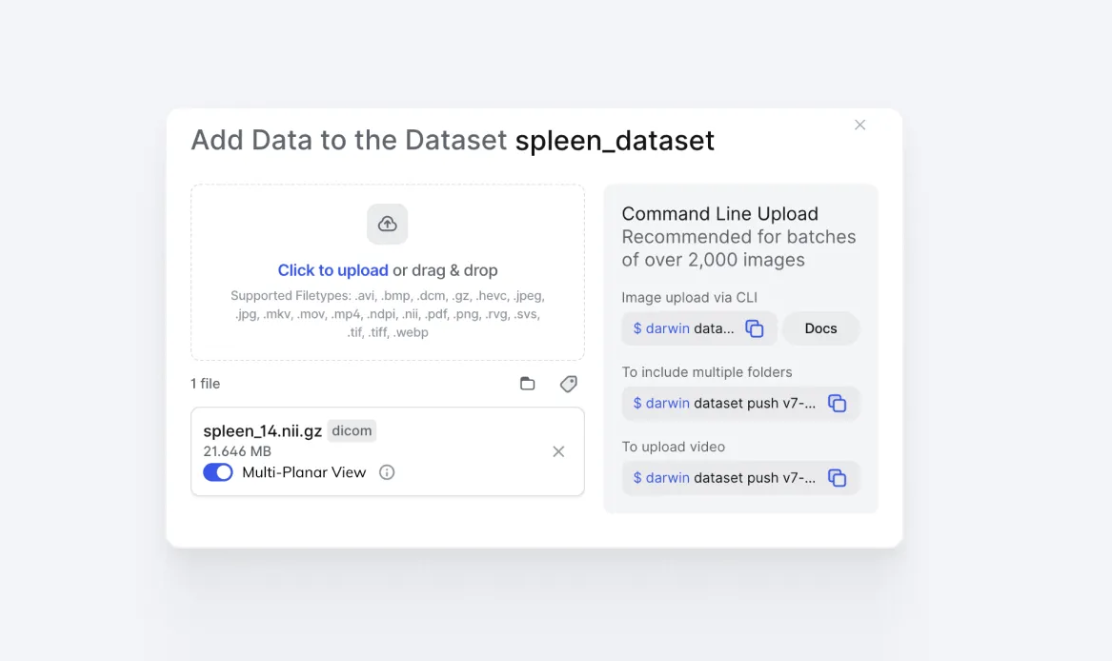
Step 2: Add labels with Auto-Annotation tools
Once your files are loaded, you can start adding annotations. V7 comes with a set of auto-annotation features that leverage several powerful segmentation models, including a version of SAM (Segment Anything Model by Meta) fine-tuned for radiology.
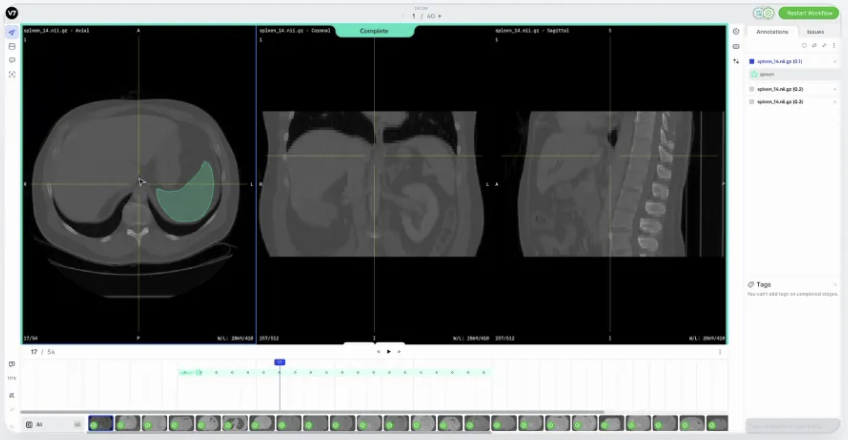
To segment an organ or lesion, simply select the relevant area. If necessary, you can refine these annotations by adding positive and negative points, or use other tools like brushes and erasers for more precise adjustments.
It is possible to speed up the process even further - you can interpolate annotations across multiple slices or connect models such as TotalSegmentator.
Step 3: Modify the code repository to initiate model training
In Amazon SageMaker Studio, a web-based IDE for end-to-end ML development, create a new SageMaker session, and set up a PyTorch estimator. This estimator will need a MONAI training script (train_spleen3d.py) and the slugified team name and the dataset name. In our example, they are v7-labs-v2 and spleen_dataset, respectively.
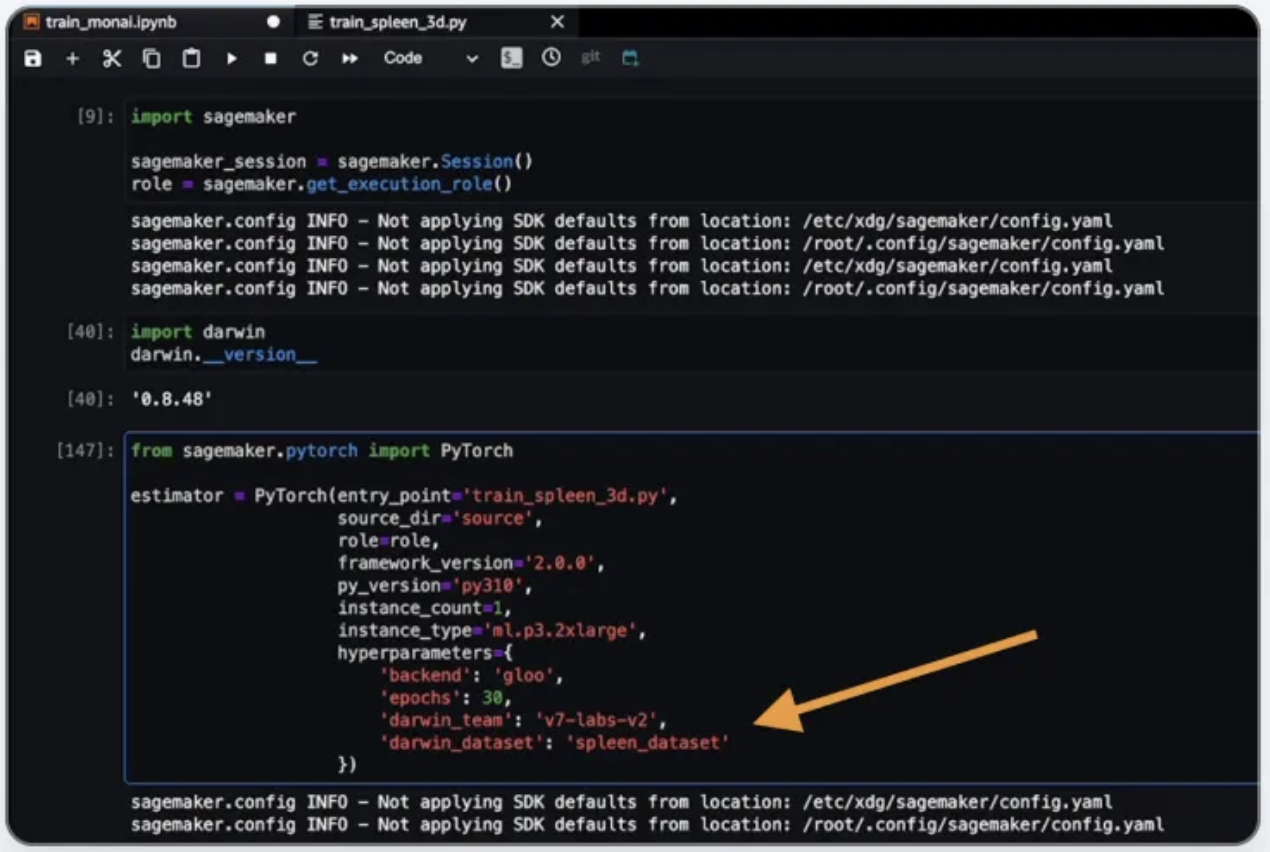
Running this script initiates a training job in an Amazon SageMaker managed training instance you specified as part of the estimator object. The script will load the V7 dataset for training.
Step 4: Register the inference endpoint and use the model in V7
After your model has been trained in Amazon SageMaker, the next step is to register it for inference in the V7 platform. Use V7's BYOM feature to connect your trained model. This process may involve parsing the requests and payloads as well as mapping your classes, but the setup is very straightforward.
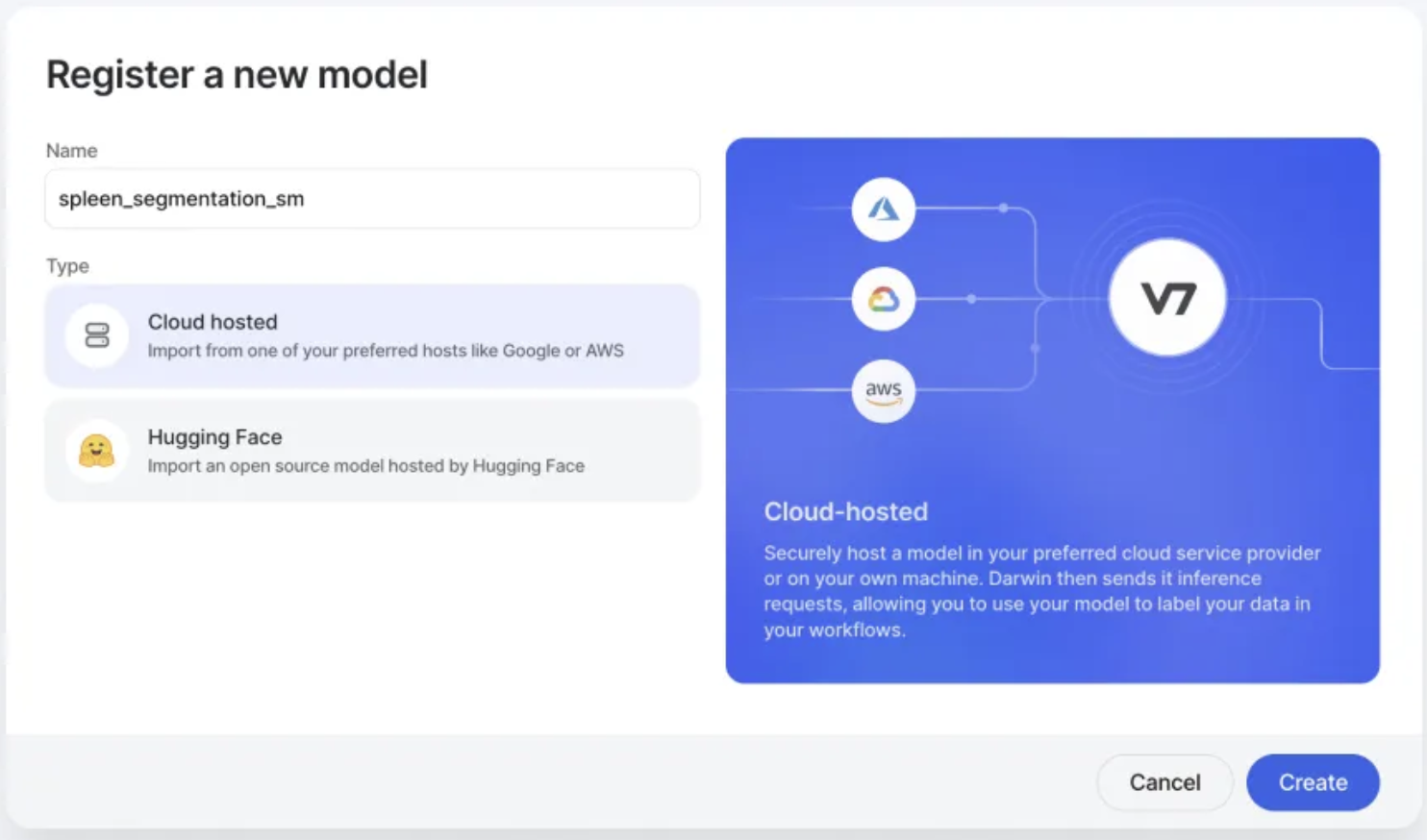
After the inference endpoint has been registered and configured, you can use it as your custom Auto-Annotate tool in V7 or as a model stage in your workflows.
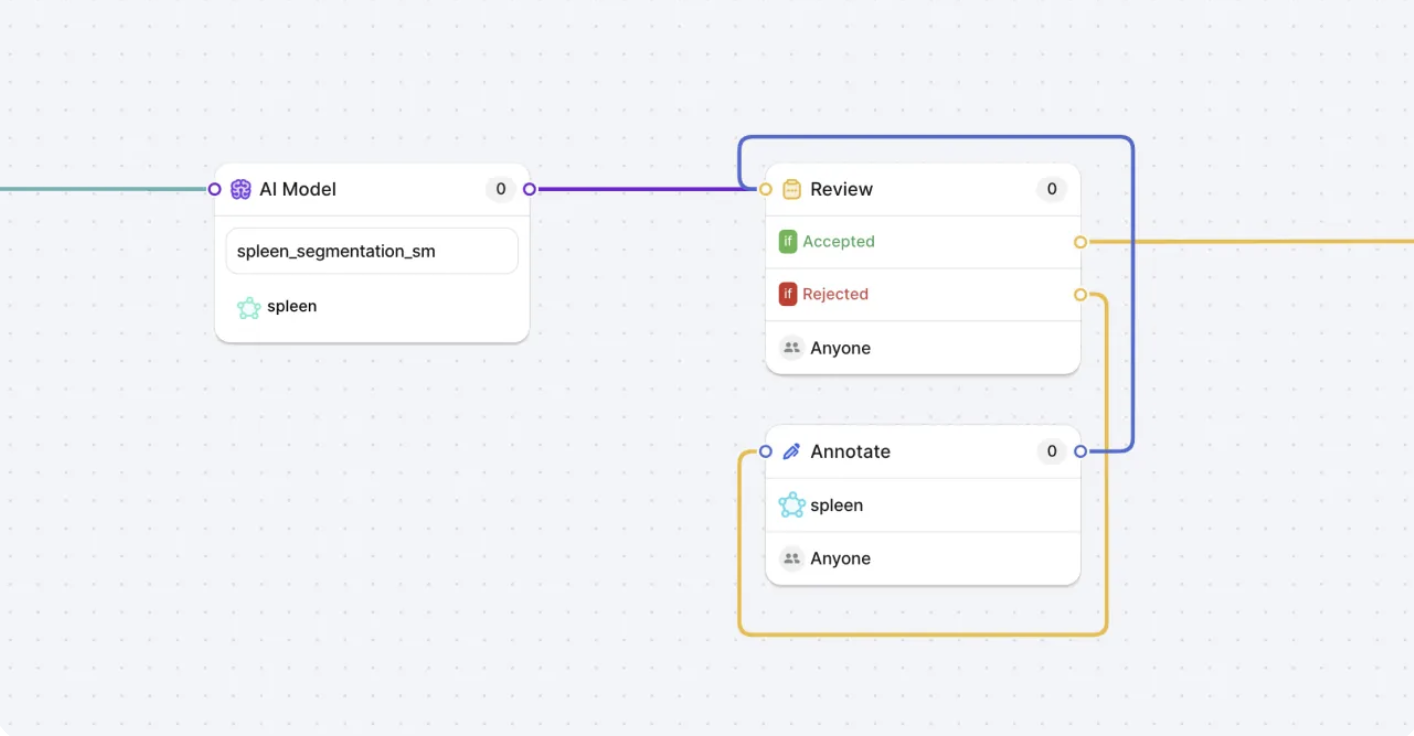
That concludes the setup.
As you can see, the integration between V7 annotations and Amazon SageMaker is seamless. All you need to do is set up a few easy-to-find parameters to start training your AI models.
The combination of V7, Amazon SageMaker, and MONAI Core enables the development of state-of-the-art AI models for radiology and other medical fields. Additionally, AWS's data storage solutions integrate with internal on-premises systems, ensuring regulatory compliance of your clinic, lab, or hospital with HIPAA, GDPR for data protection in Europe, and FDA guidelines for medical devices and software.
Updated 3 months ago
